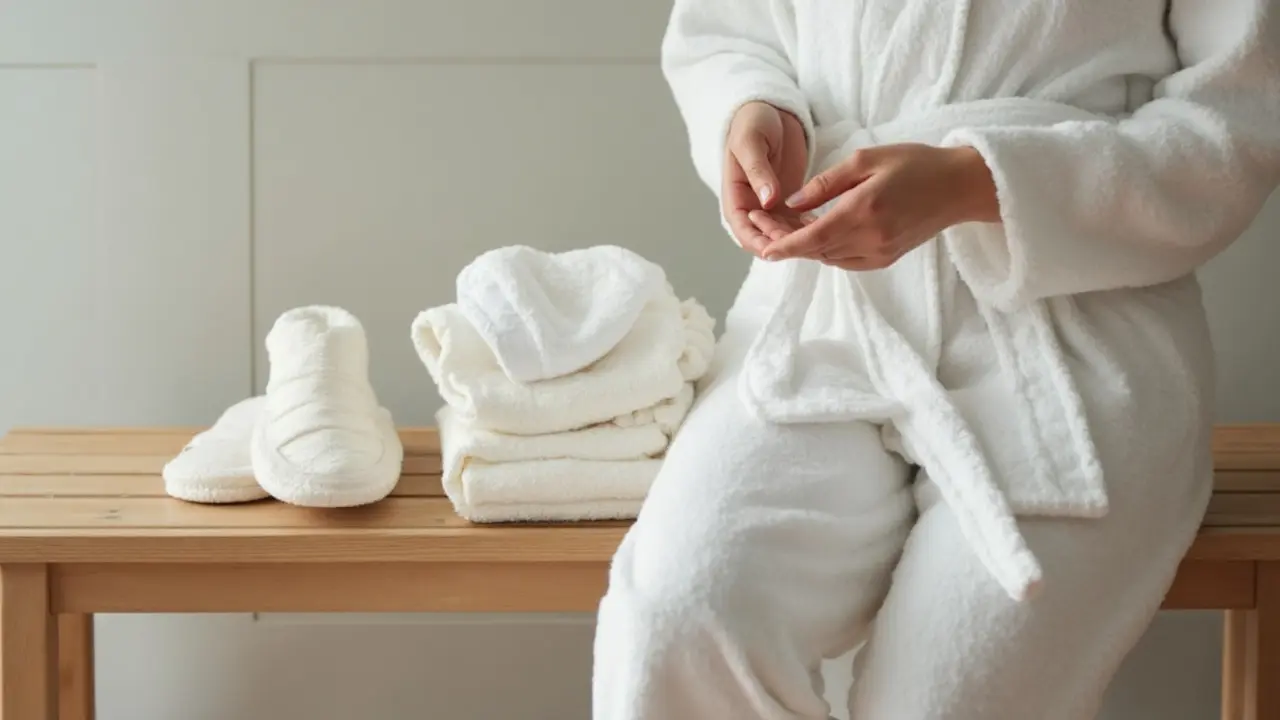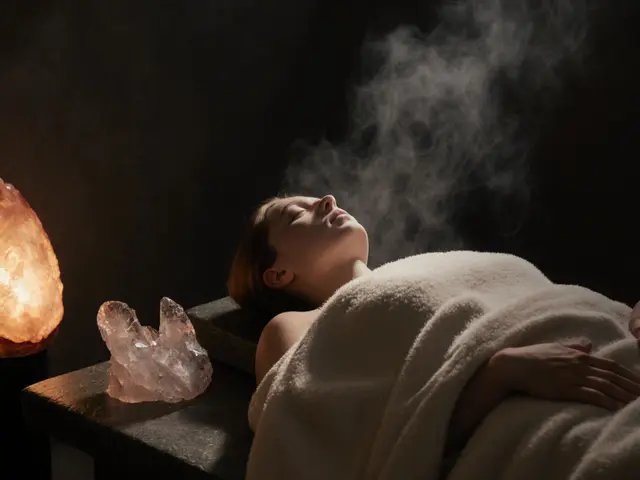So you’ve booked your first Swedish massage and now you’re wondering what you just signed up for? You’re not alone. A lot of people walk into their first appointment with a mix of excitement and nerves, not sure if they should show up in gym shorts or a bathrobe. The truth is, getting ready for a Swedish massage isn’t complicated—but knowing what to expect can take a lot of the weirdness out of it.
If you’re thinking all massages are the same, think again. Swedish massage is all about relaxing muscles, getting your blood flowing, and basically melting stress away with a mix of long, smooth strokes and gentle kneading. There’s no deep muscle twisting or painful pressure points here. Think more like hitting the reset button for your whole body.
One of the best hacks for enjoying your massage? Show up a little early. Ever sprinted into an appointment out of breath? Not exactly relaxing. A few extra minutes gives you time to slow down, use the restroom, and fill out any forms without feeling rushed. Trust me, your body will thank you later.
- Breaking Down Swedish Massage Basics
- What to Do Before Your Appointment
- What Actually Happens in the Room
- Tips for Comfort and Communication
- Getting the Most Out of Your Session
Breaking Down Swedish Massage Basics
Swedish massage isn’t just your average back rub—it’s the most popular type of massage you’ll find at spas across the world. The main idea is to help you relax and loosen up your muscles without going deep into pain territory. It’s perfect for first-timers because it gets your body used to touch and pressure, but in a chill and approachable way.
The routine involves a few classic moves: long, gliding strokes (called effleurage), gentle kneading (petrissage), rhythmic tapping, stretching, and some circular motions with the therapist’s hands or fingers. The strokes usually follow the direction of blood flow toward your heart, which helps boost your circulation and carries away tension. Studies show Swedish massage can leave you with less anxiety, lower blood pressure, and even better sleep.
Here’s what happens during a typical Swedish massage session:
- You’ll lie down on a padded table, usually under a sheet or towel.
- The therapist uses massage oil or lotion to keep the movements smooth and painless.
- They focus on big muscle groups—think your back, shoulders, legs, and sometimes your arms or neck.
- You decide how much clothing to keep on (most folks undress to their comfort level), and the staff always keeps you covered except the area they’re working on.
Don’t expect anything crazy or intimidating; there’s no deep digging or intense stretching. It’s a session built for relaxation, stress relief, and helping your body feel better by the time you get off the table. For most people, it’s their first step into the world of bodywork and self-care because the approach is gentle, predictable, and just feels good.
What to Do Before Your Appointment
Prepping for your first Swedish massage is simple, but it can make a big difference. Don’t eat a big meal right before—your body will be more comfortable if you stick with something light. Chugging a bottle of water before you hit the spa isn’t great either; you don’t want to spend half your time wondering if you need a bathroom break. Staying hydrated during the day is good, just don’t overdo it right before you walk in.
If you take medications or have health concerns, mention them when you book the appointment. Some spots require you to fill out a health form, so be honest; this helps your therapist avoid areas that might be sensitive or inflamed. Not sure if something counts? Ask. Therapists have heard it all—they’re not judging.
- Arrive at least 10-15 minutes early to check in and handle paperwork without rushing.
- Wear loose, comfortable clothes so you’re relaxed before and after the massage.
- Avoid alcohol or anything that might dehydrate you on the day of the massage.
- Bring a list of medications if you’re on any—some places will ask.
- Take off jewelry and watches at home so you don’t worry about losing them.
If you want to know what most folks actually do, here’s a quick rundown:
| Tip | Why It Matters |
|---|---|
| Shower before | Keeps you fresh and helps you (and your therapist) feel comfortable |
| Skip heavy lotions or oils | Therapists use their own massage oils |
| Turn your phone off | No pings or calls to kill your chill vibe |
Most spas have a no-shoes policy inside, so slip-on shoes are your friend. And if you’re worried about hair, makeup, or shaving—honestly, your therapist couldn’t care less about stubble or a bad hair day. Their focus is on your muscles, not your looks.

What Actually Happens in the Room
Alright, you walk into the massage room—what now? The therapist usually greets you, checks if you have any sore spots or medical stuff to mention, and then runs through what a Swedish massage involves. Usually, you’ll be told how to get on the table, and you’ll have total privacy to undress to your comfort level. Some wear underwear, others go nude under the sheet. Nobody’s judging—seriously, therapists see this every day.
The table looks a bit like a padded bench with a face cradle. Fresh sheets and a towel are there for you to cover up. Therapists step out for a minute so you can get settled. You’ll usually lie down face-up or face-down, depending on how they want to start. The blanket or sheet stays over you the entire time, and the only part exposed is what’s being worked on—arms, back, legs, whatever. No awkward surprises.
Expect the massage to start with gentle strokes to warm up your muscles. Swedish massage uses moves like effleurage (smooth gliding), petrissage (kneading), friction (small circles), and tapotement (rhythmic tapping). It’s all designed to help blood flow and relax your whole body. No sharp elbows digging in, just smooth and steady pressure that can be adjusted—don’t hesitate to say if you want it lighter or firmer.
The therapist will use oil or lotion so their hands glide easy. Heads up: if you’re allergic to anything scented or specific products, let them know before they start. The room’s usually kind of dim, maybe soft music playing in the background—anything to keep the vibe chill.
Most sessions run about an hour, but some places offer thirty- or ninety-minute options. You don’t need to chat unless you want to. More people than you think just zone out or even fall asleep, which is totally normal.
When it’s over, the therapist lets you know and then leaves so you can get dressed in peace. You’ll feel groggy or spaced out (in a good way!), so don’t rush straight out the door—take your time. Grab some water on your way out, since getting a massage can be a bit dehydrating, even if you don’t notice it.
Tips for Comfort and Communication
The secret to an awesome Swedish massage isn't just about lying still and hoping for the best. Your comfort actually matters—like, a lot. Therapists want your honest feedback, so don’t be afraid to speak up if something feels awkward, cold, or painful. Sounds obvious, but lots of first-timers stay quiet about stuff that bugs them. Here’s how to handle it like a pro:
- Tell your therapist about injuries, aches, or sensitive spots before the session starts. They can steer clear of problem areas or spend extra time where you’re tight. Mention if you bruise easily, have allergies (like to lotion scents), or any conditions like varicose veins or recent surgeries. This is standard info in most spas—they might have a quick intake form for that.
- Temperature too cold? Just say so. It’s normal to ask for extra blankets or to tweak the table warmer. Therapists would rather take one minute to fix it than have you shivering the whole time.
- Let them know what pressure you like—from feather-light to a little deeper. Swedish massage is meant to be soothing, but everyone’s “relaxed” feels different. You won’t offend your therapist if you ask for adjustments—they’d rather know.
- Need to adjust your position? Move around or ask for help. If your arm falls asleep or your face hurts from the headrest, that’s normal. A quick shift can save the rest of the session.
- TMI with the bathroom? Nope. If you need a bathroom break, just say so. Don’t hold it in and ruin your relaxation. They’ll step out while you slip out of the room.
If conversations make you more nervous than relaxed, you don’t have to chat the whole time. Most therapists follow your lead: if you want silence, they won’t force conversation. But if anything feels off, now’s not the time to be shy—clear communication beats toughing it out.
Here’s a quick look at what people most commonly bring up during their sessions:
| Concern | Percent of Clients Who Speak Up |
|---|---|
| Pressure too strong or weak | 62% |
| Table temperature | 20% |
| Needing a position change | 13% |
| Music/lighting adjustments | 5% |
Most therapists say clients worry more than they need to about what’s “normal” during a massage. So relax, talk about your needs, and remember—you’re in charge of your own comfort.

Getting the Most Out of Your Session
Want to get every last bit of relaxation from your Swedish massage? Don’t just lie there and hope for the best—there’s a few things you can do before, during, and after to really reap the benefits.
First, tell your therapist exactly what you’re hoping to get out of the session. Got a tight neck? Sore lower back? Don’t keep it secret. Your massage can be tweaked to focus on problem spots or to just help you chill out—it’s your call. The more honest you are, the better the results.
During the massage, tune in to how your body feels. It’s totally normal if you drift off or let your mind wander, but if something feels weird or uncomfortable, say so. This isn’t the time to tough it out. Most therapists actually appreciate quick feedback if the pressure is too light or too firm. Silent suffering just leads to disappointment.
Right after your Swedish massage, take it slow getting up. Your body just spent an hour unwinding, so stand up gently to avoid feeling dizzy. Drink plenty of water—this isn’t just a myth. Studies show hydration actually helps your muscles recover after a massage and can reduce next-day soreness.
To stretch out that loose, relaxed feeling, consider these tips:
- Avoid heavy exercise or stressful meetings right after your massage. Take it easy and let your body soak in the goodness.
- If possible, plan a warm bath later that day. Heat can boost blood flow and make the relaxation last even longer.
- If you notice any lingering soreness (especially the first time), try some light stretching or apply a cool pack.
If you’re curious about how most people feel after a Swedish massage, check out this rundown from a recent client survey:
| Feeling Post-Massage | Percentage of Clients |
|---|---|
| Deep Relaxation | 74% |
| Less Muscle Soreness | 68% |
| Better Sleep That Night | 61% |
| Improved Mood | 55% |
Last thing—be patient with yourself. For some folks, it takes a couple of sessions before they really feel at home on the massage table. The more you go, the more helpful each session feels, and pretty soon the whole process won’t seem mysterious at all.





